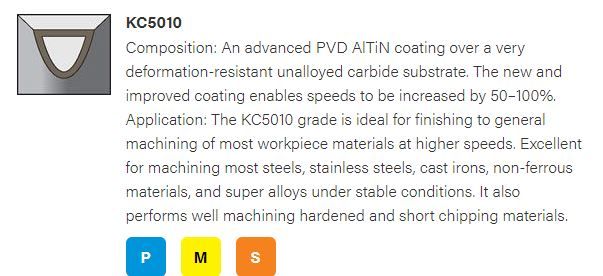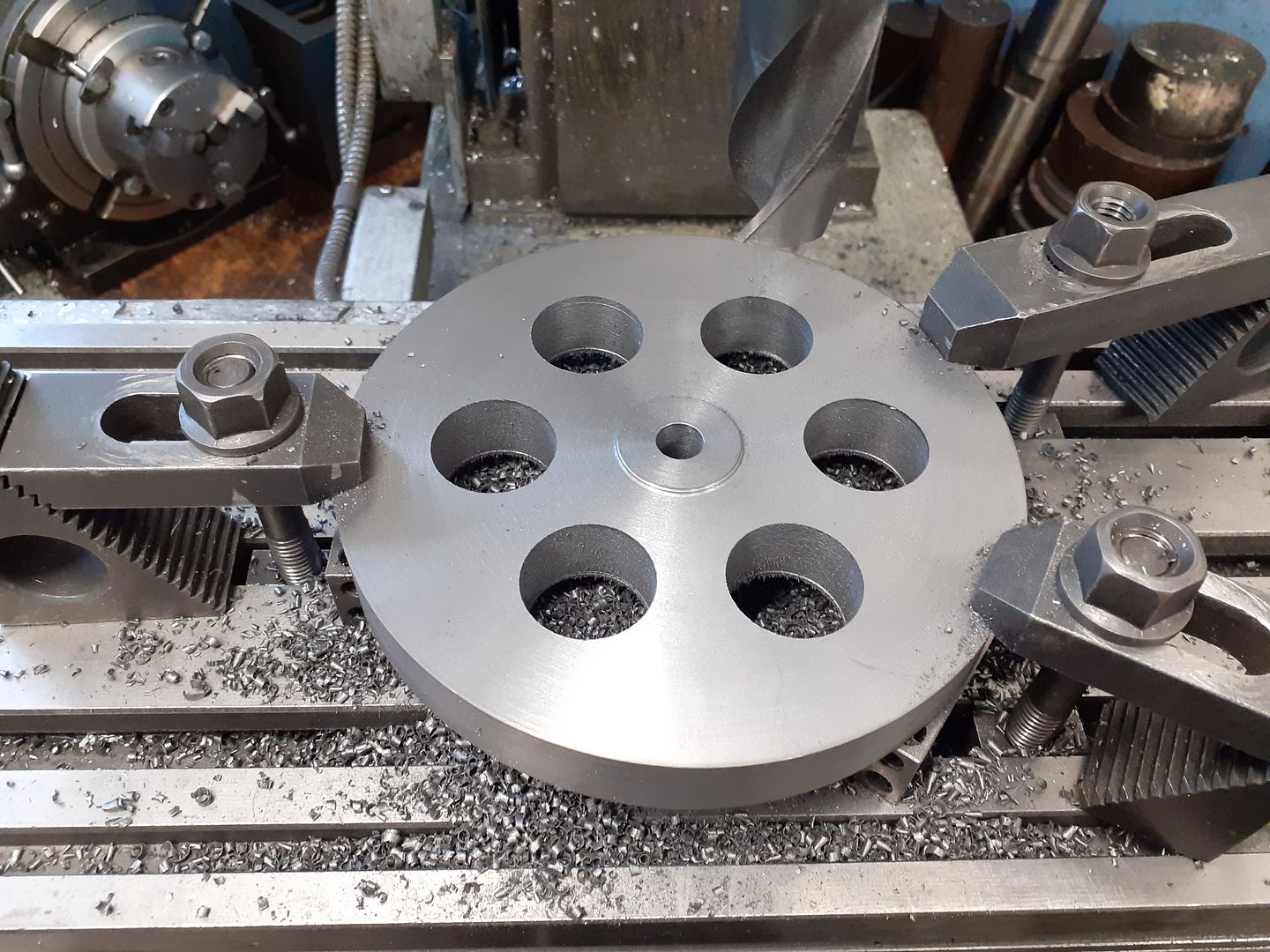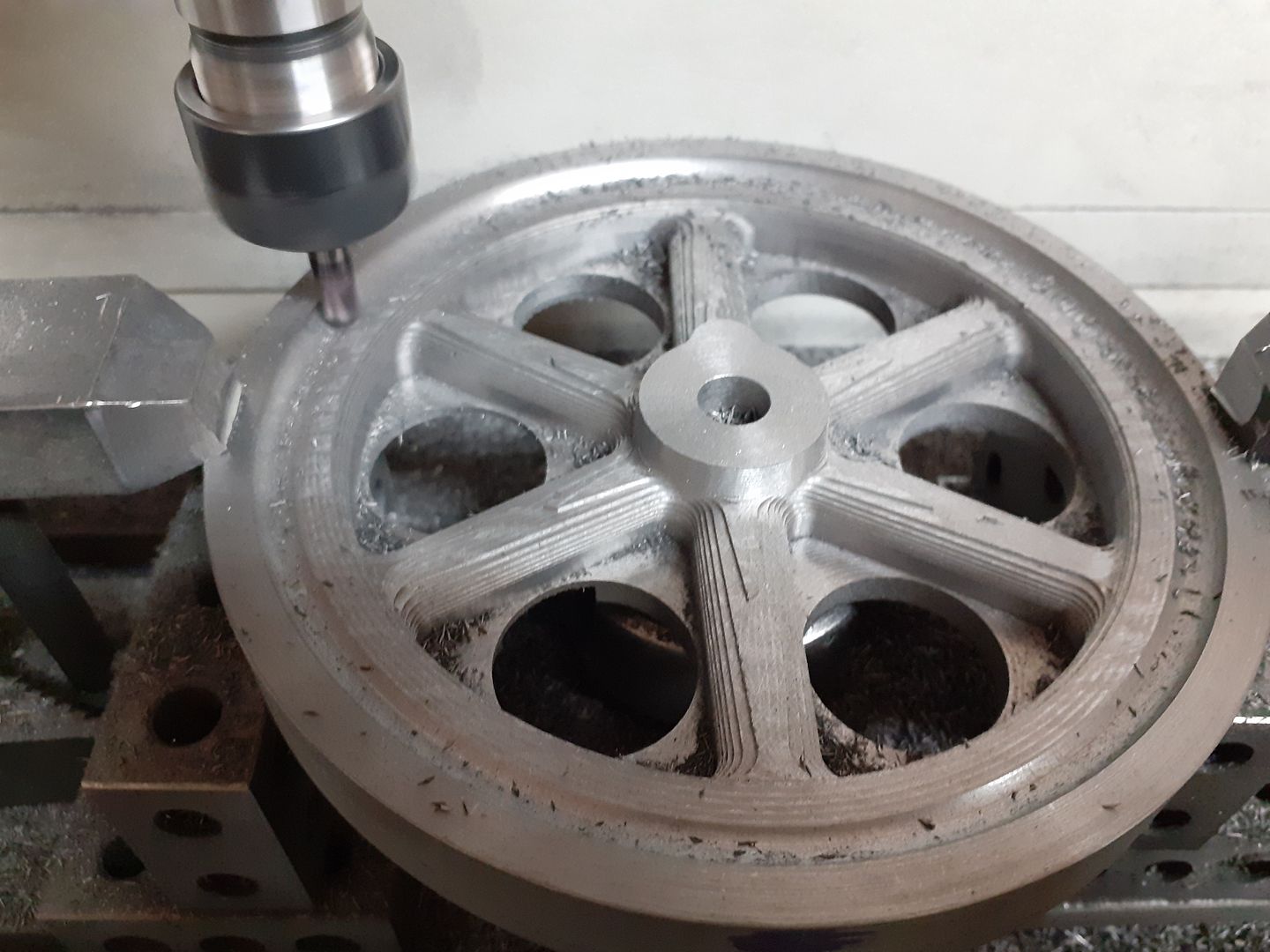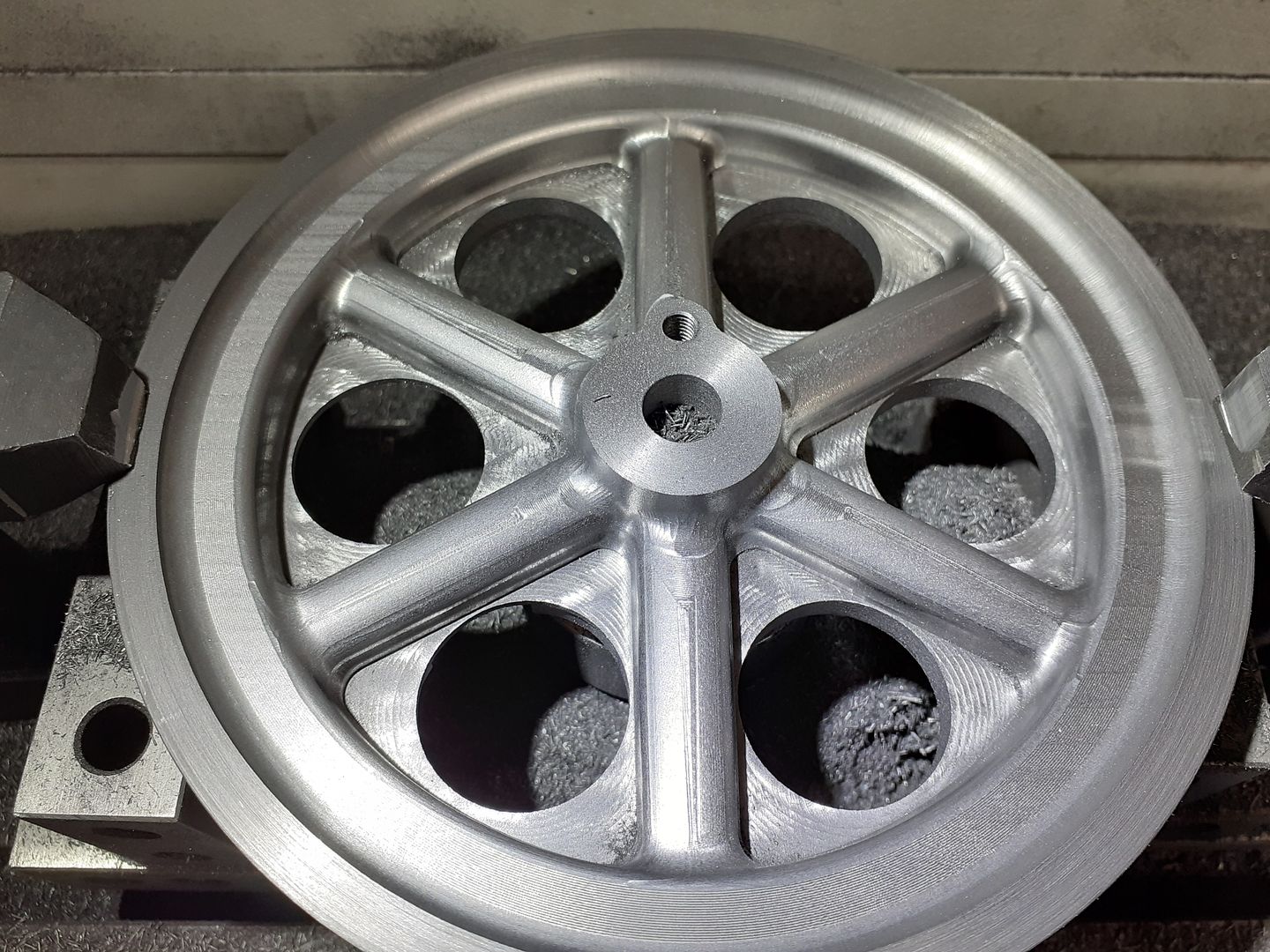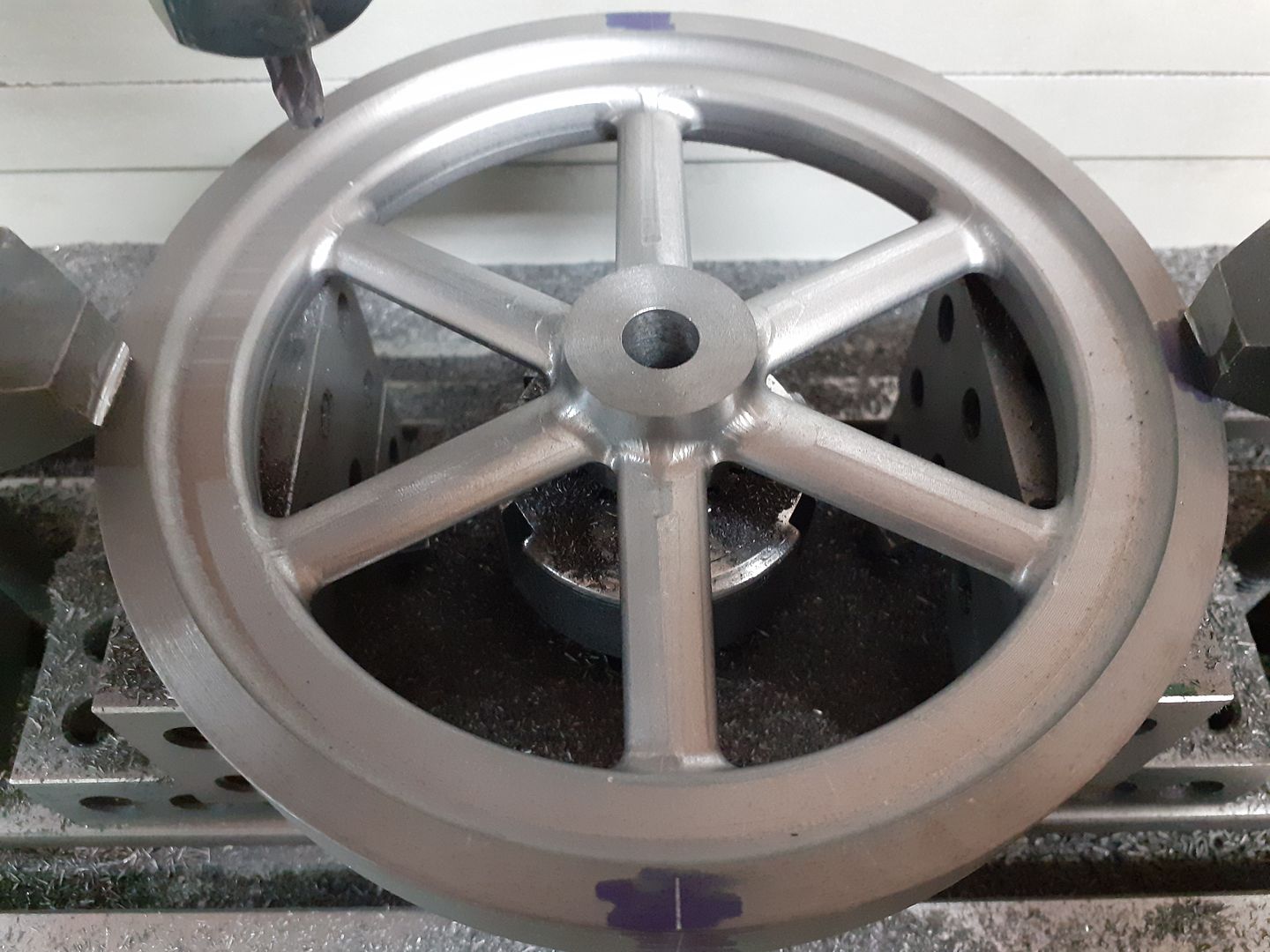After turning the second black I decided drill six 1" holes to remove some of the initial waste material as it's a bit more fun than watching the CNC do it with the added bonus that the swarf can drop down rather than need clearing out of deep pockets. While set up like this I also held a scriber point in the chuck and marked the edge of the disc so I could get in the correct position on the other mill.

As I had two flywheels to do and they would need setting up twice so that each side could be done I put a piece of the crankshaft material in a flange mount ER32 collet and clocked that in to 0,0 so the parts would always be centred. 1,2,3 and 20, 40, 80 blocks packed the work up to just clear the top of the collet nut.

It was then just a case of placing a flywheel on the pin, rotating until the mark lined up with a pointer in the chuck and clamping down tight. The basic shape was roughed out with an adaptive path using a 6nn 3-flute cutter at 4500rpm, 300mm/min feed, 5mm vertical DOC with 1mm stepover to leave it looking like this

I've actually just started the finishing "scallop" cut in the above photo using a 6mm 4-flute ball ended cutter at 4500rpm, 500mm/min feed and a stepover of 0.25mm which slowly worked its way around the rim and then down around each spoke to leave a finished half looking like this.

It was then just a case of flipping the part over and running similar cuts for the other side though the boss is round on the inside where as the outside had the boss for the crank pin.

The few odd ridges and steps look a lot worse than they feel and were quickly removed with needle files and a bit of Emery.
I also got round to setting up an air lower for the second side and wish I had done it sooner as I was able to leave the machine to it's own devices rather than having to keep clearing swarf like I did on the first side during the roughing cuts, not so bad on the finish cuts as very little is being removed. Will show some photos of this in the Further Adventures thread at some time.
Ron Laden.


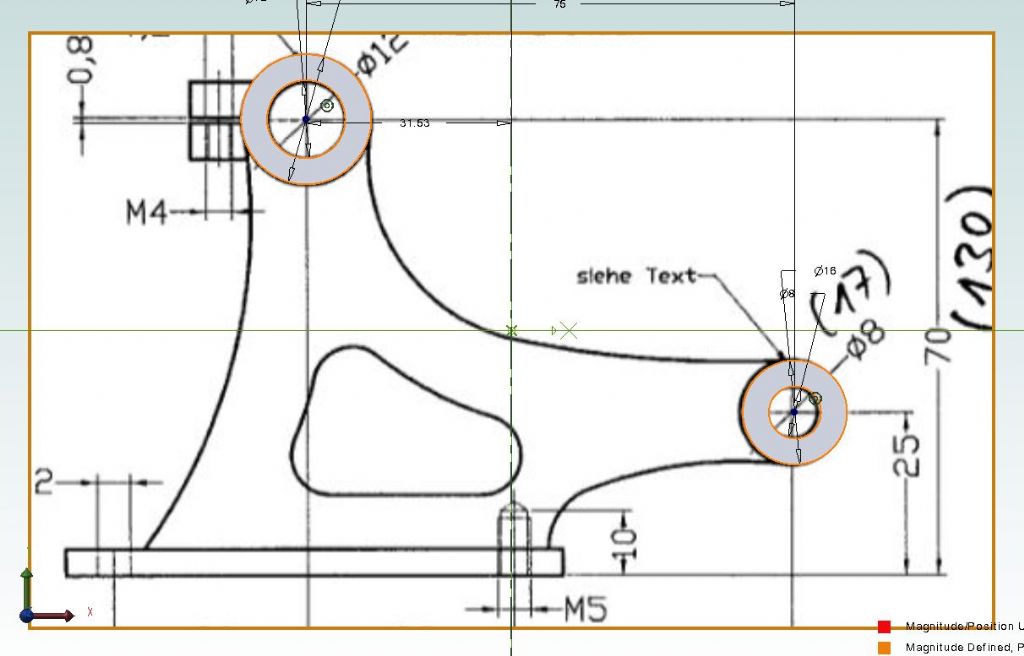


 I've not seen many engines with the claim the design is to help line things up and not sure it was actually a feature of the full size as a lot seem to show a separate cap.
I've not seen many engines with the claim the design is to help line things up and not sure it was actually a feature of the full size as a lot seem to show a separate cap. 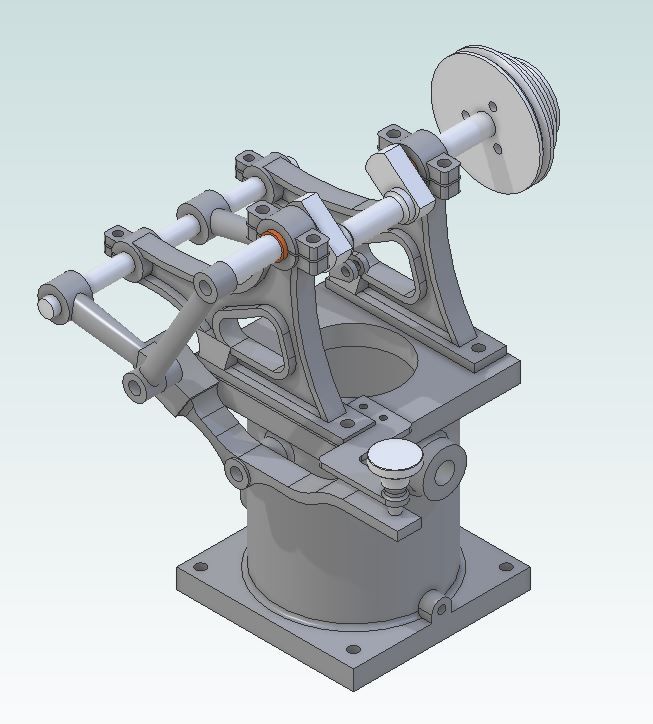

.jpg)
.jpg)
.jpg)
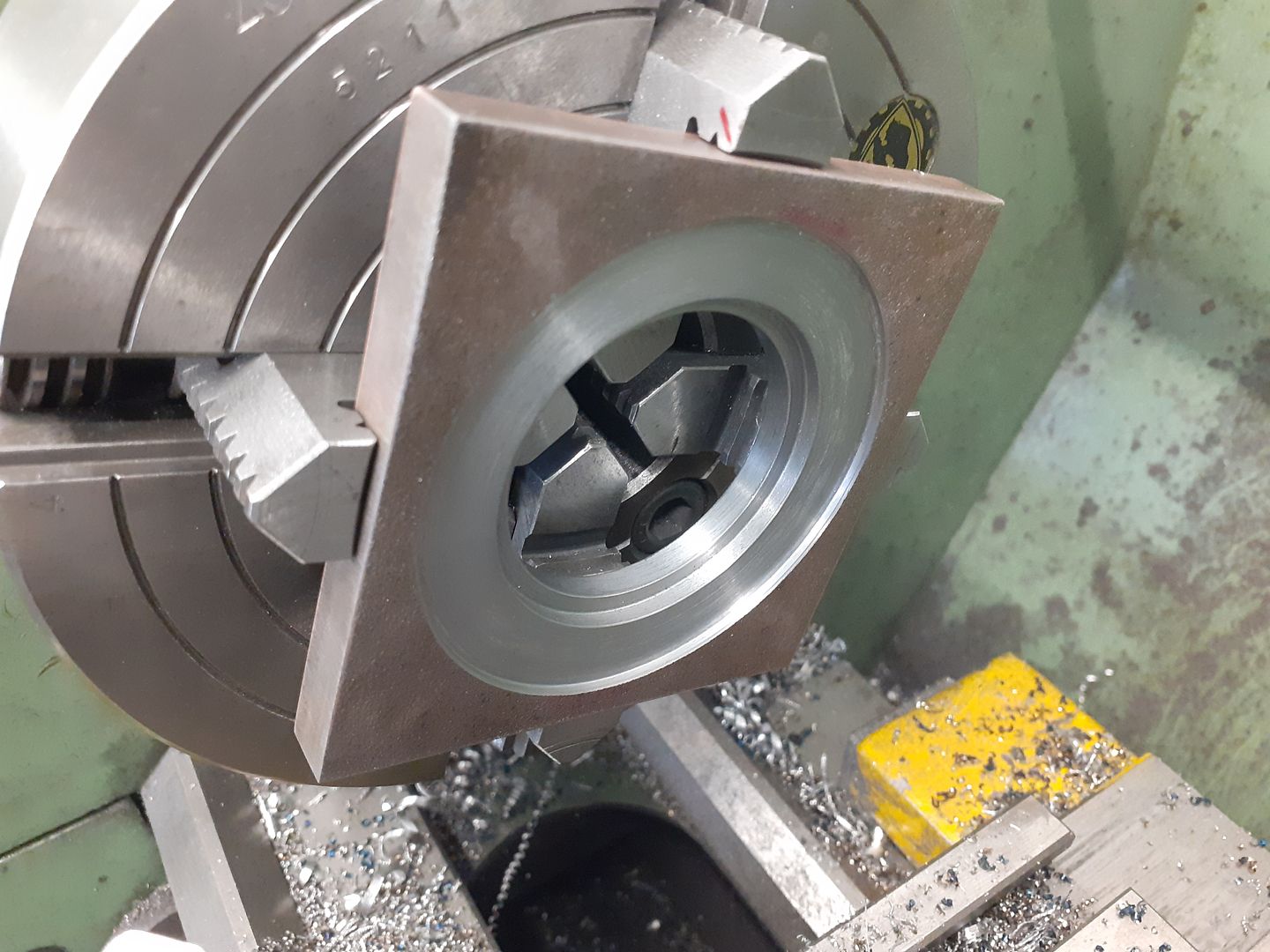
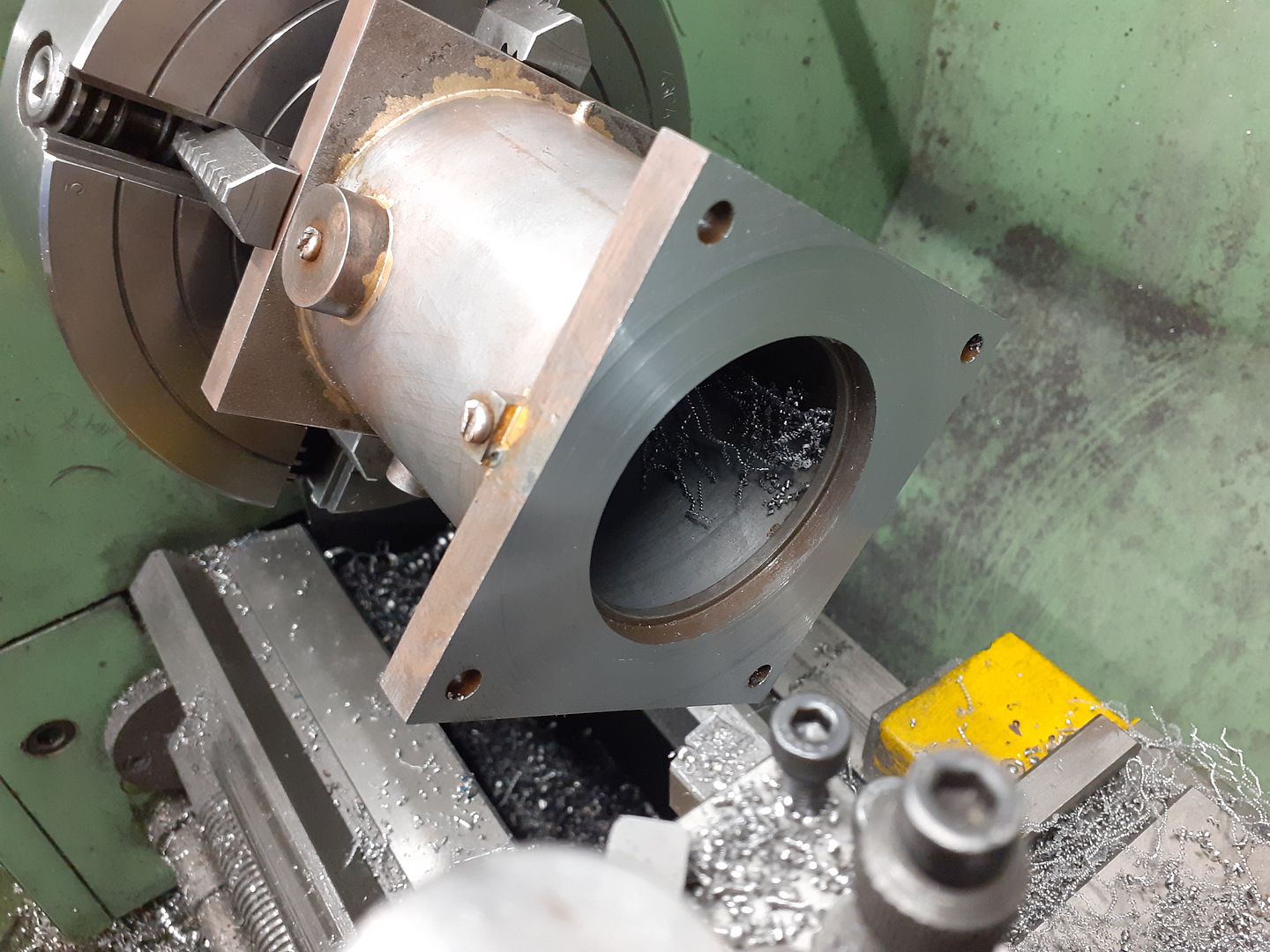

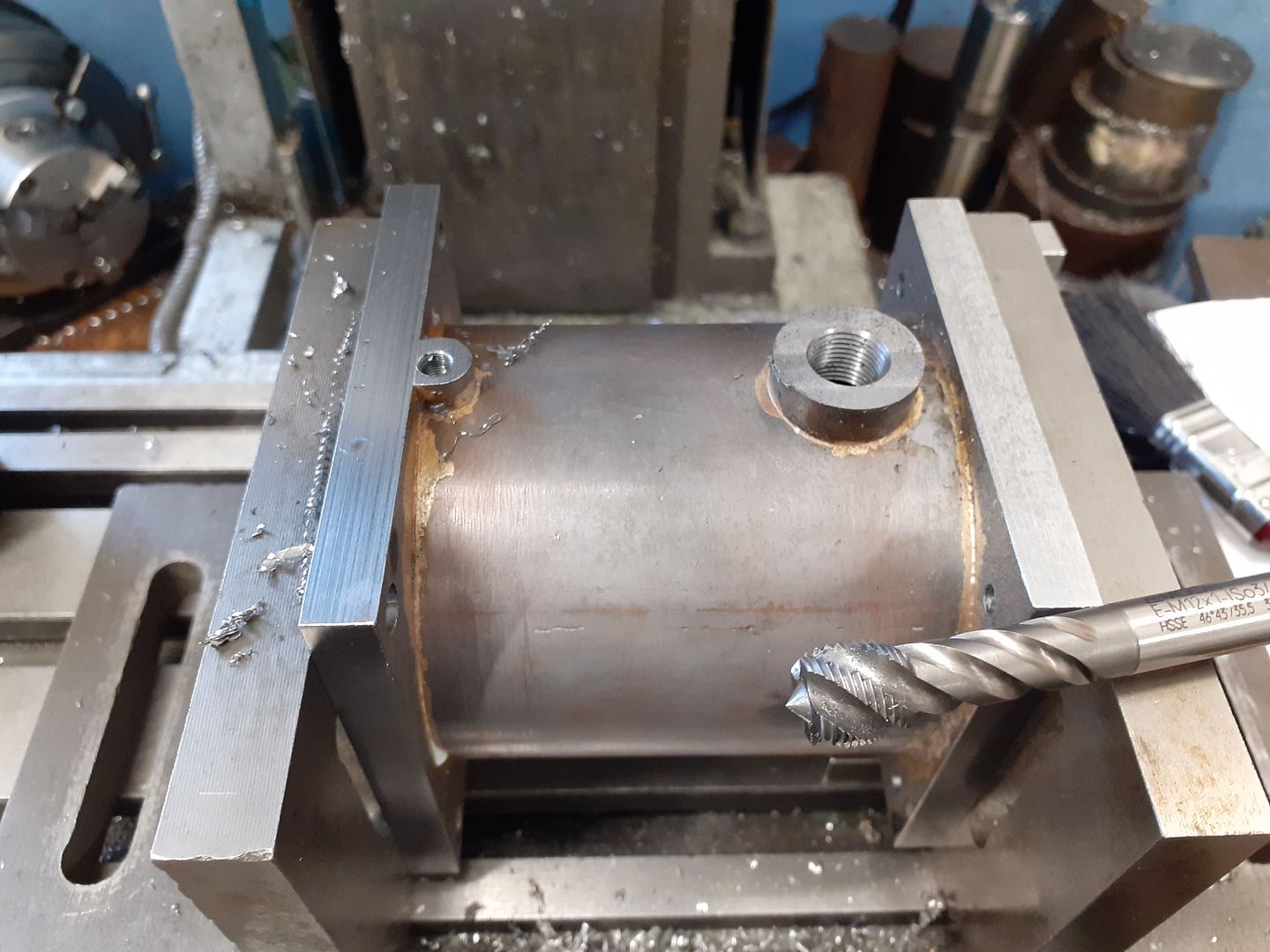
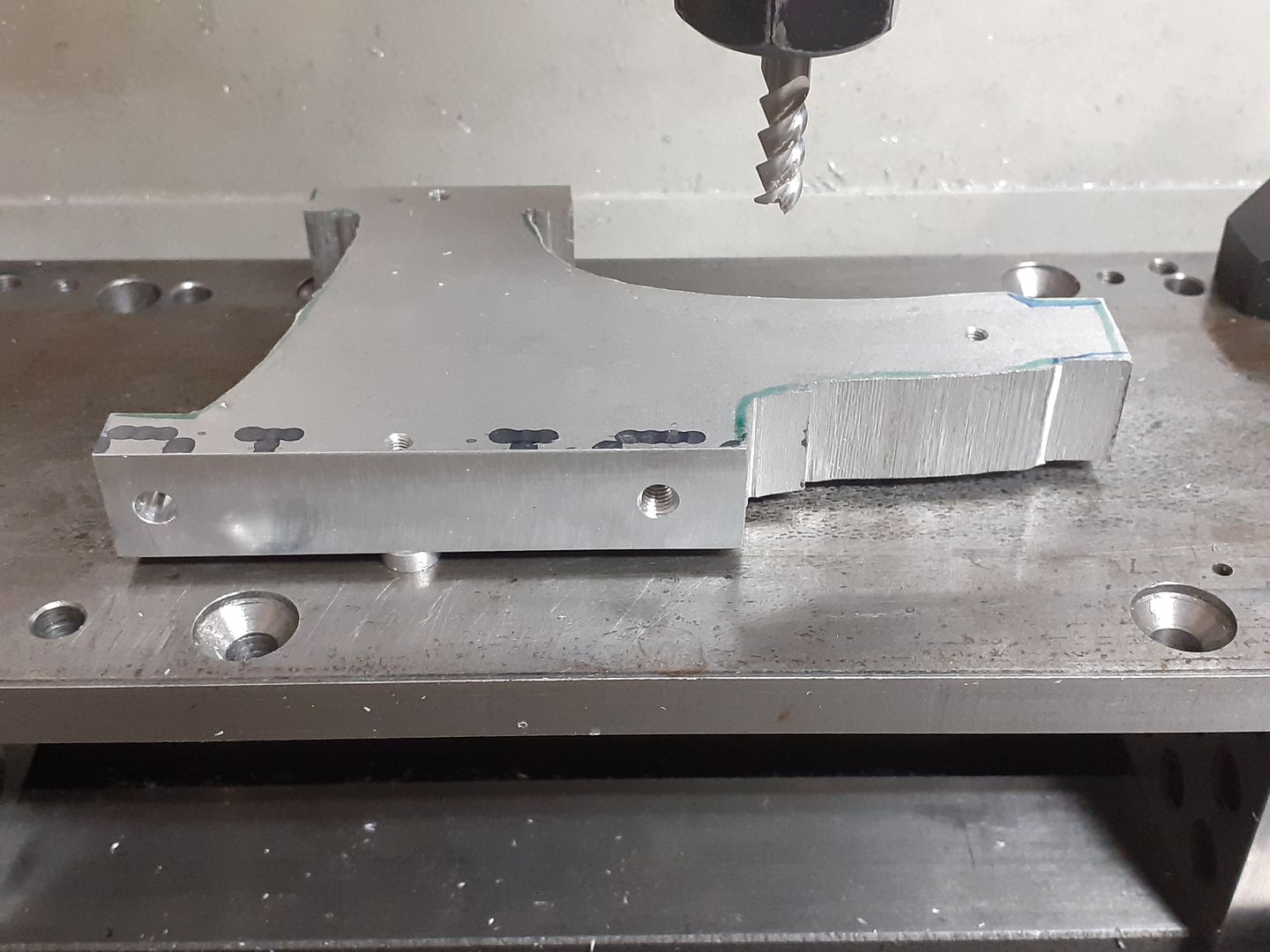
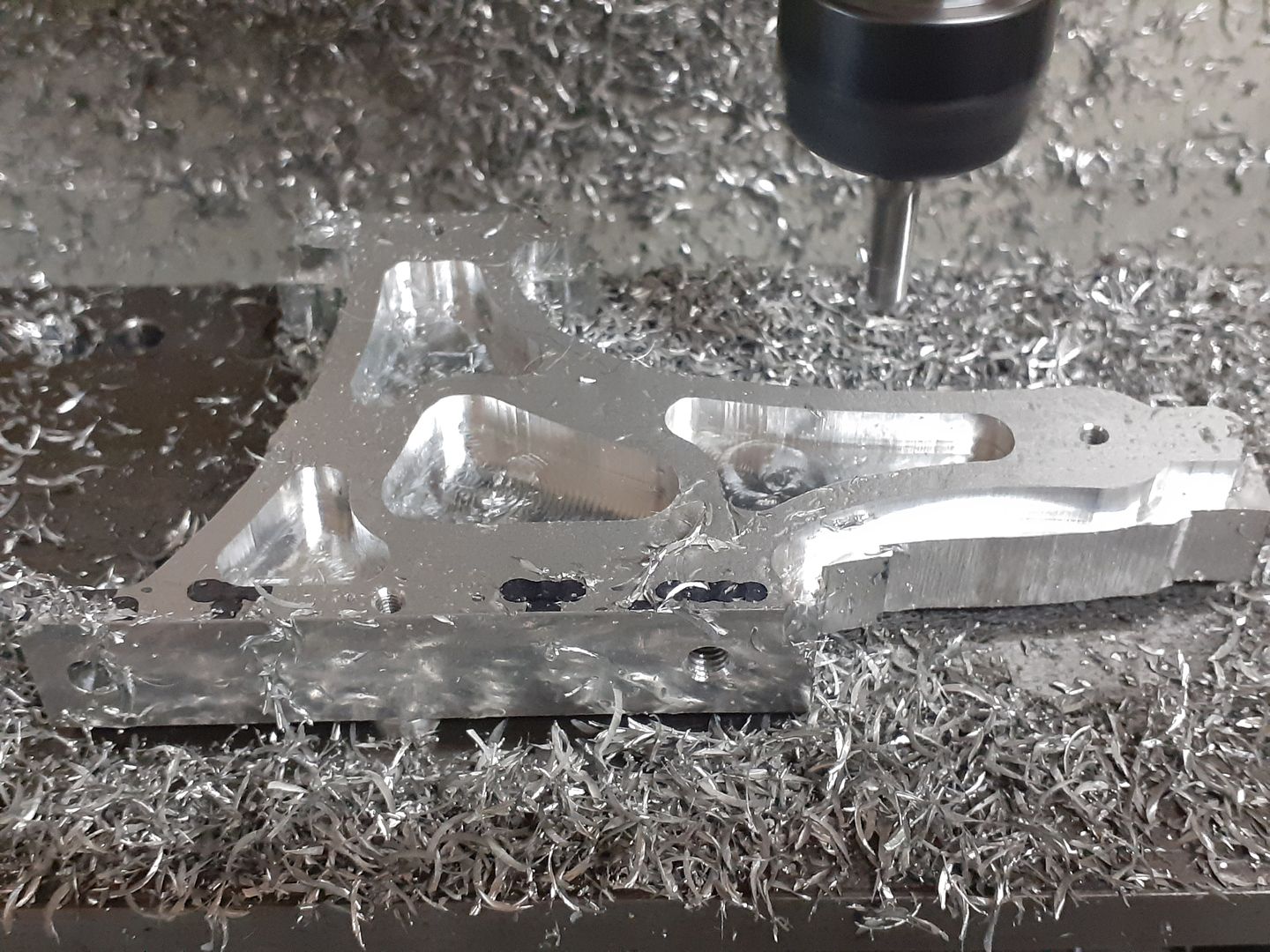

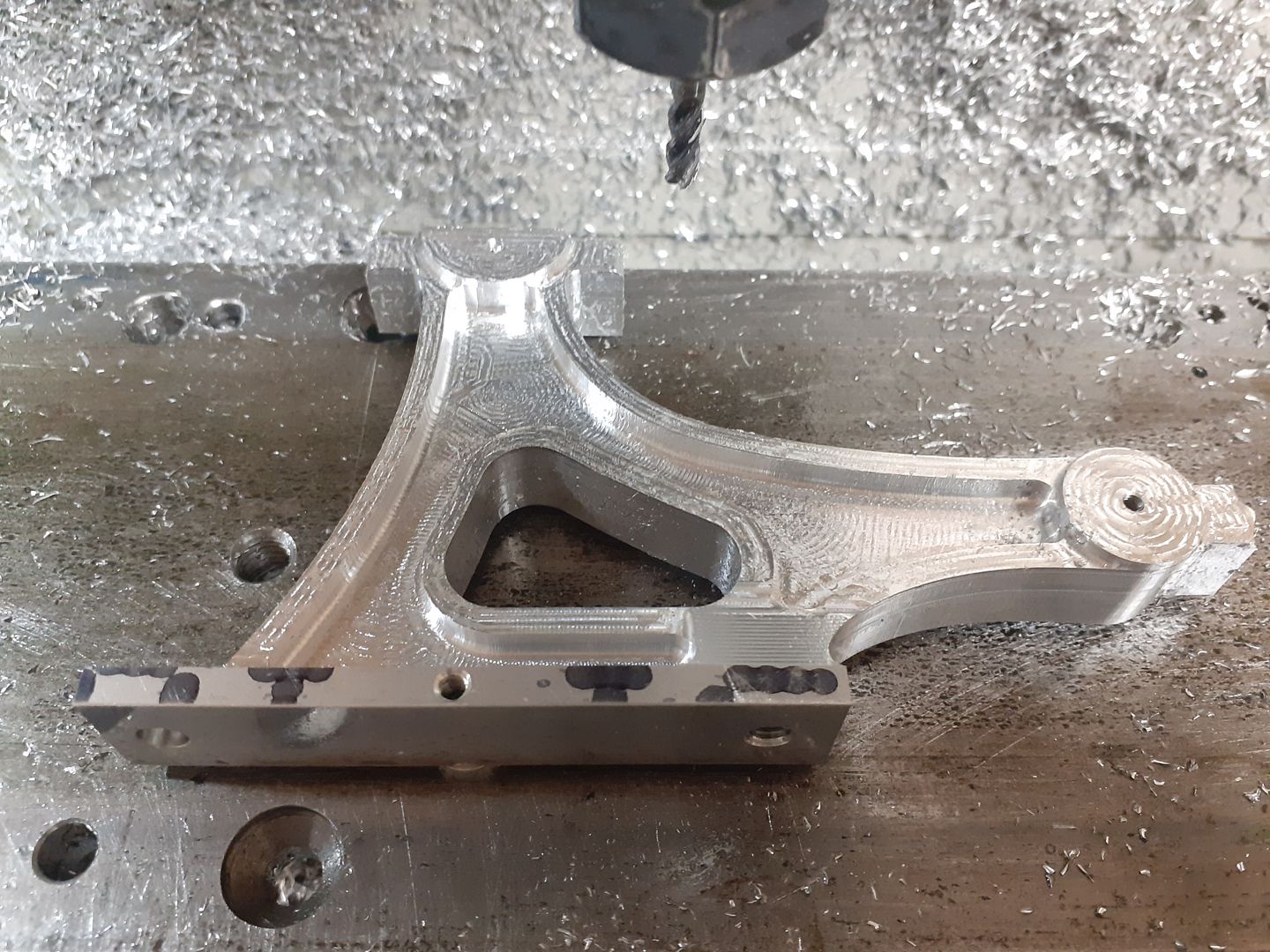
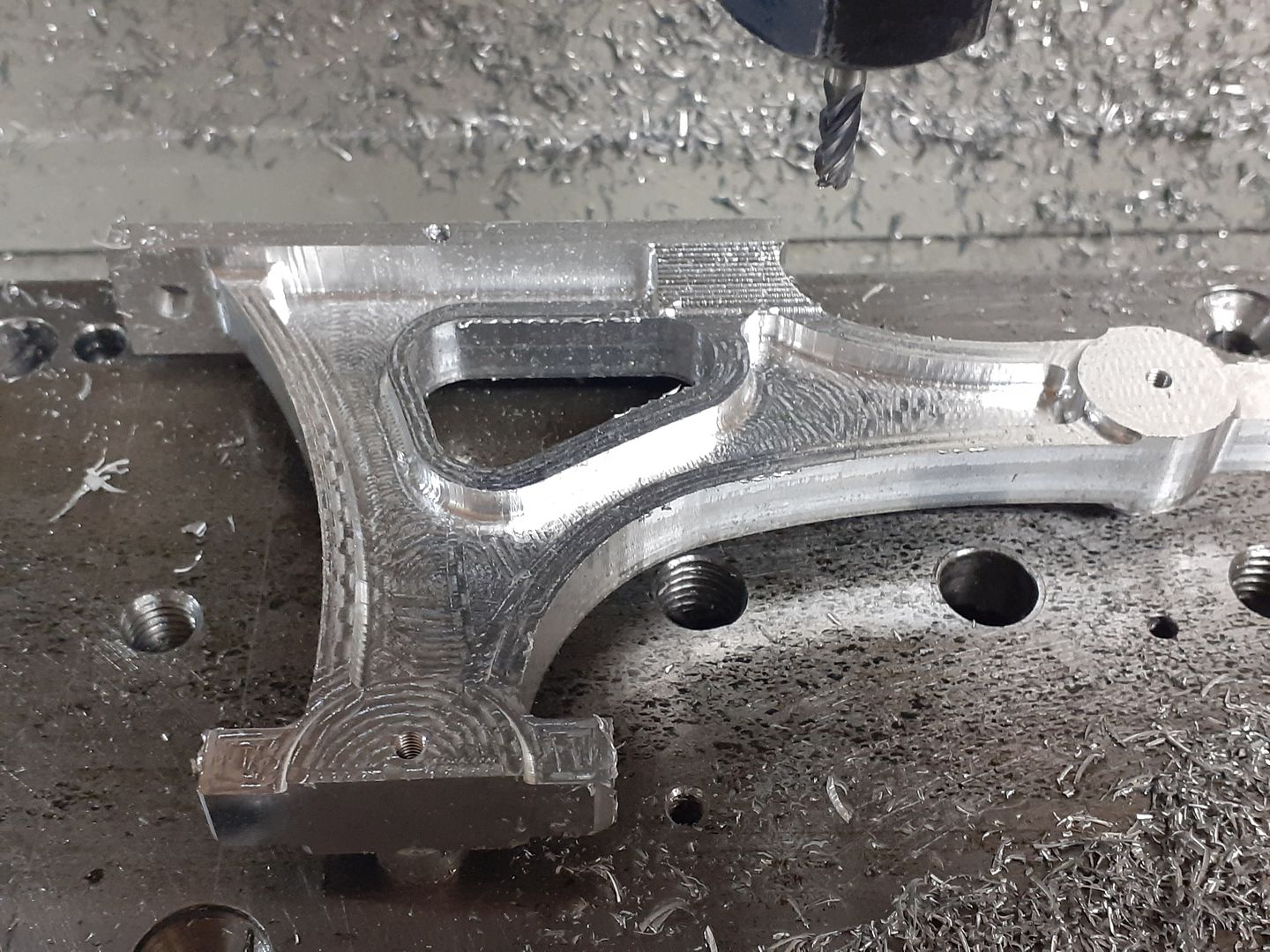



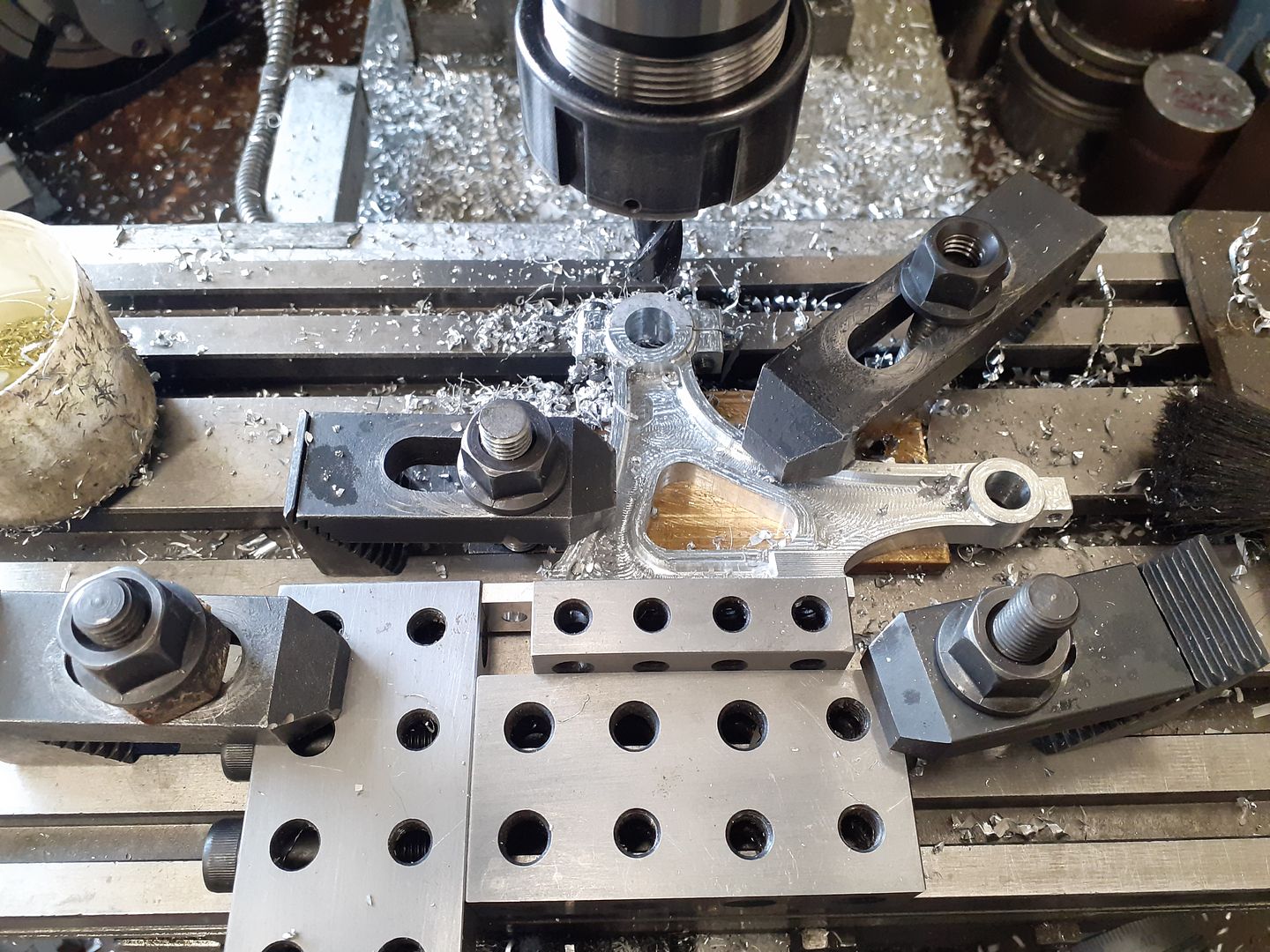

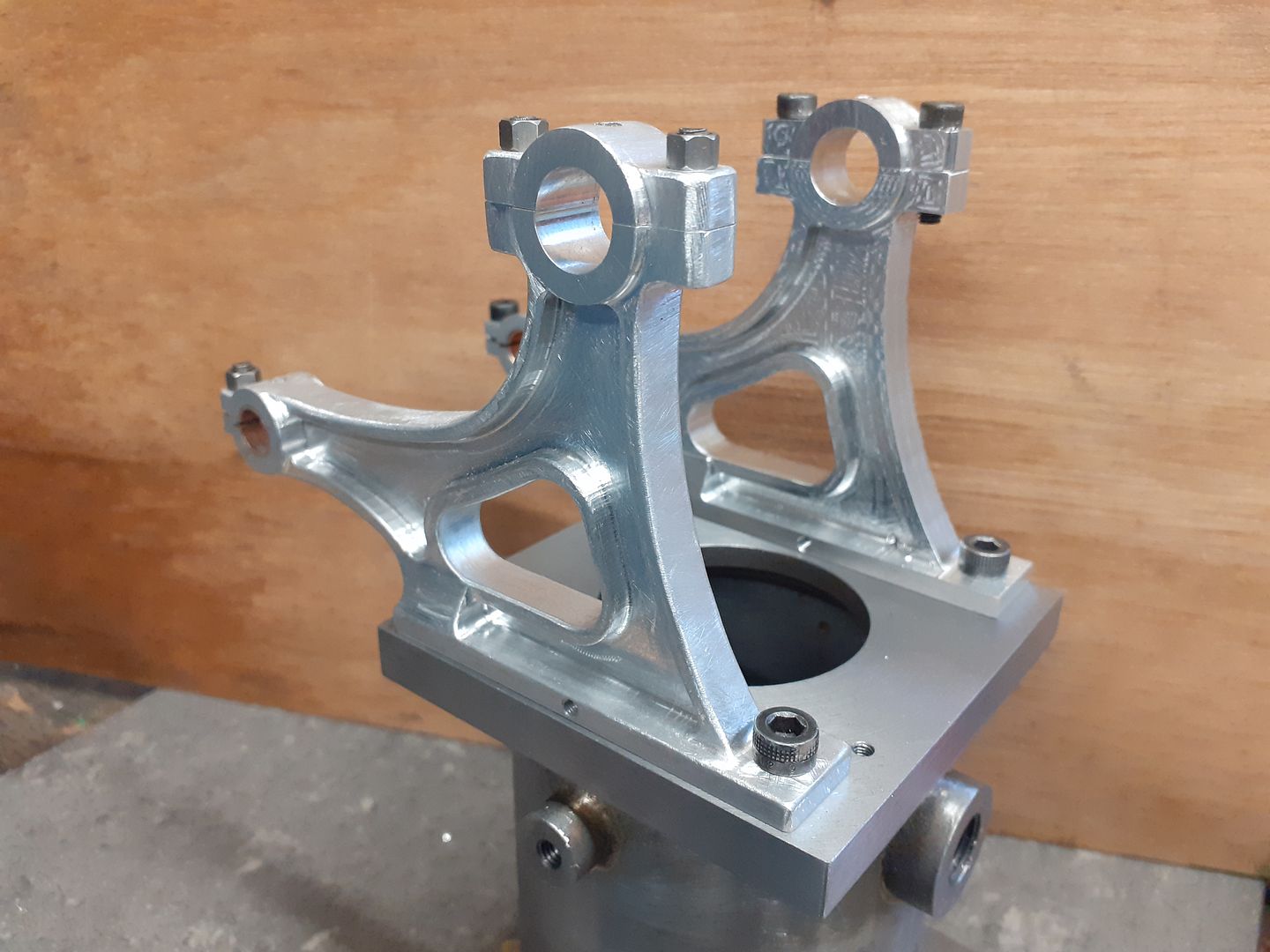

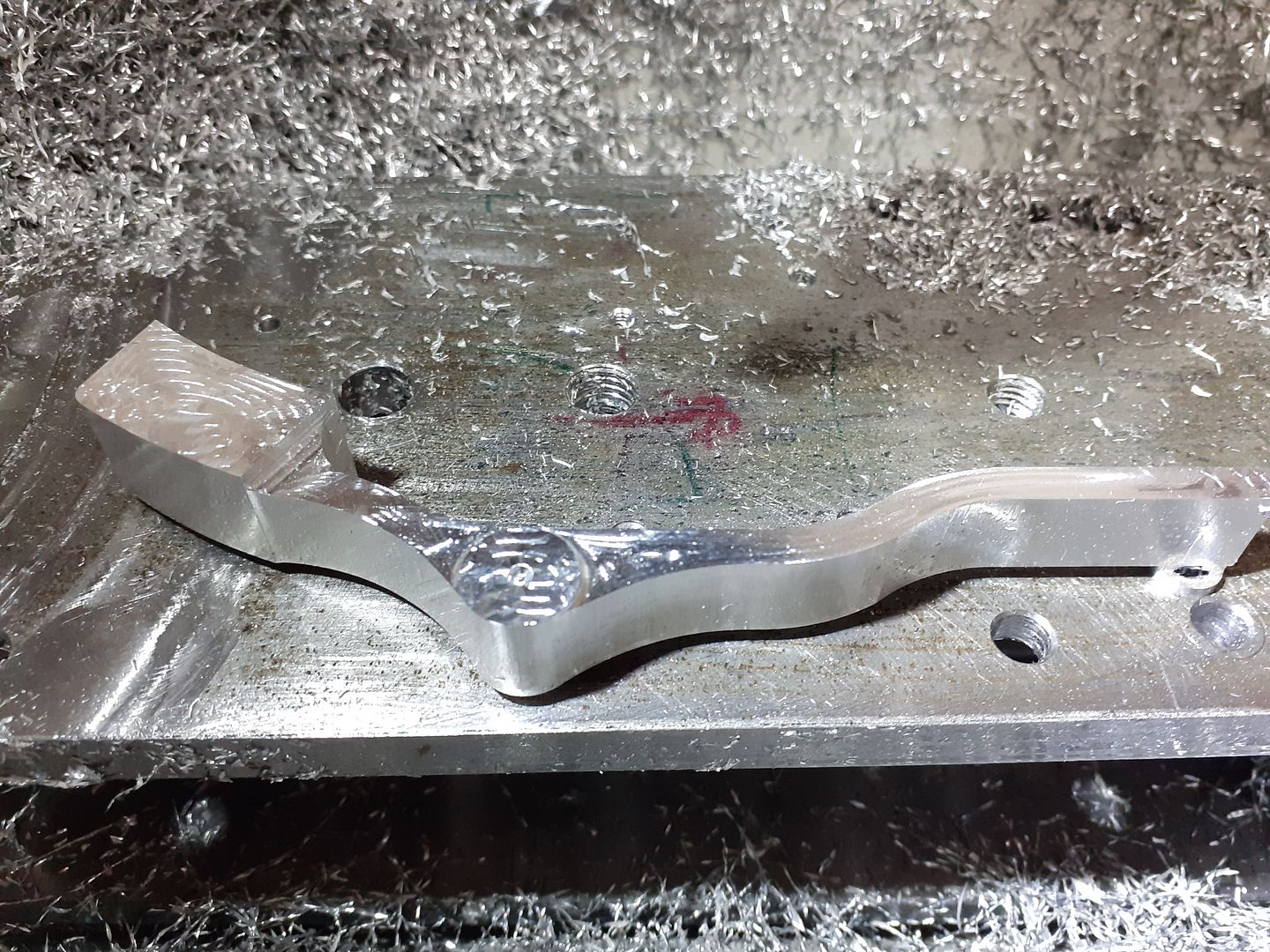
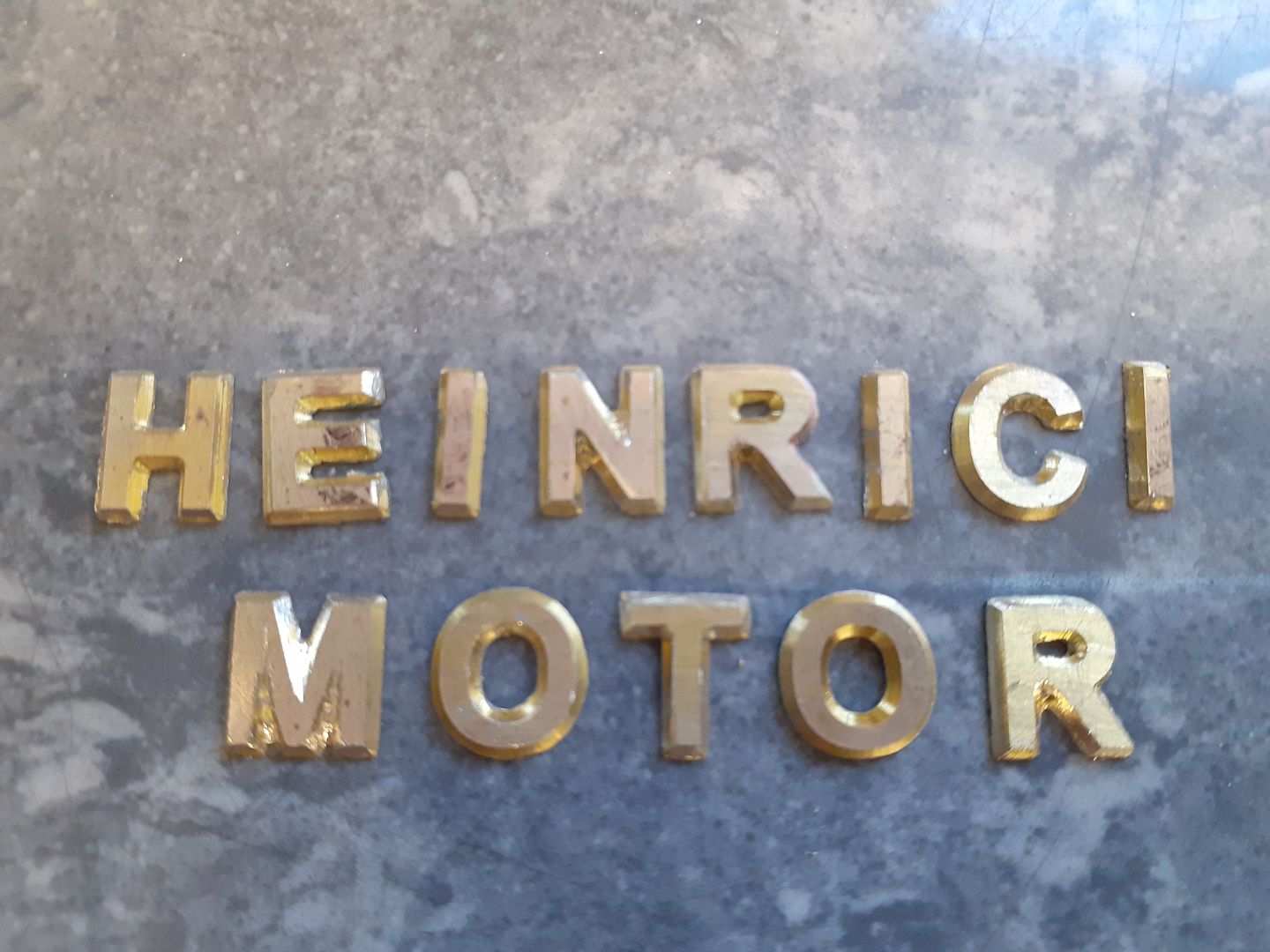

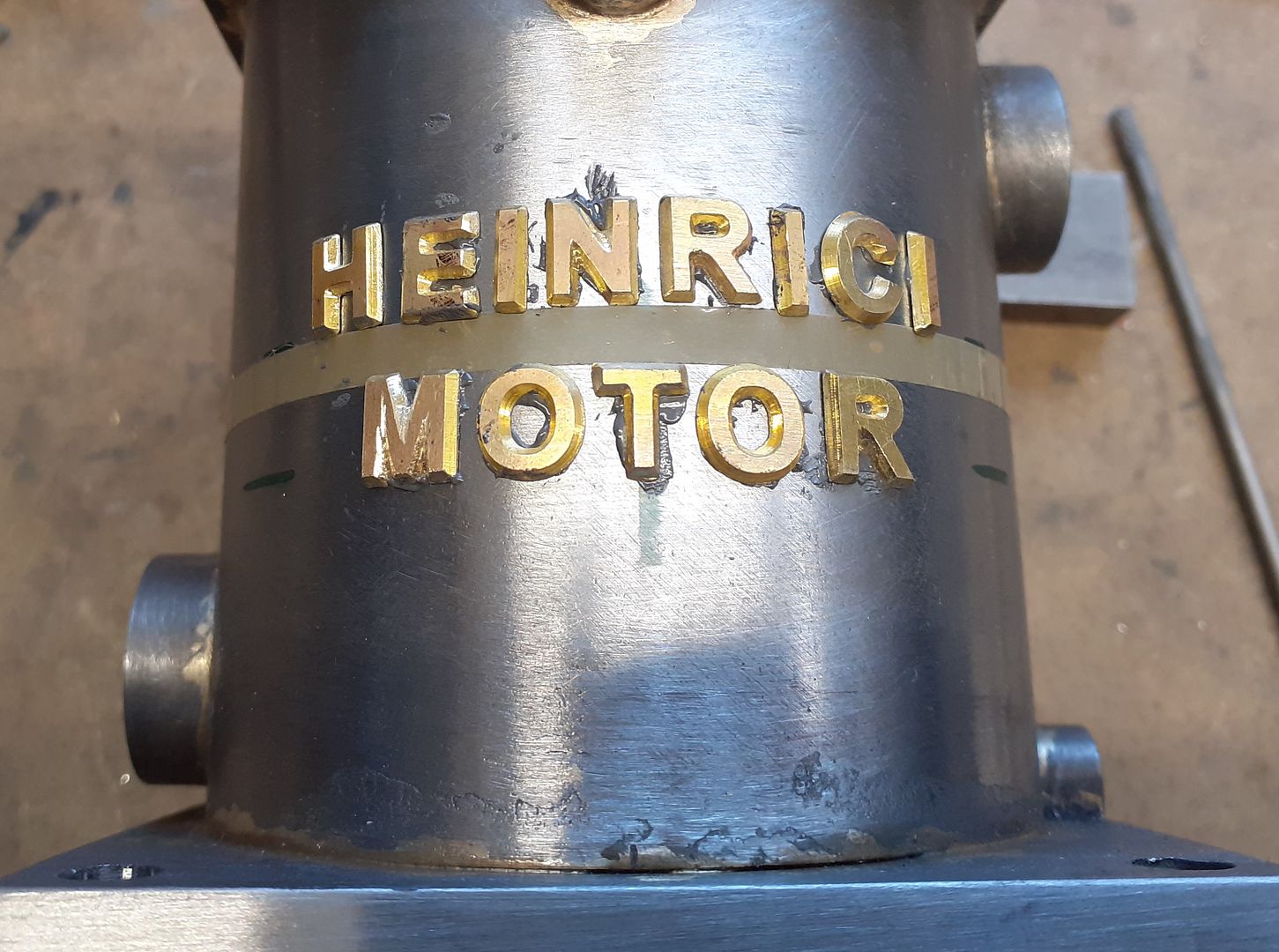
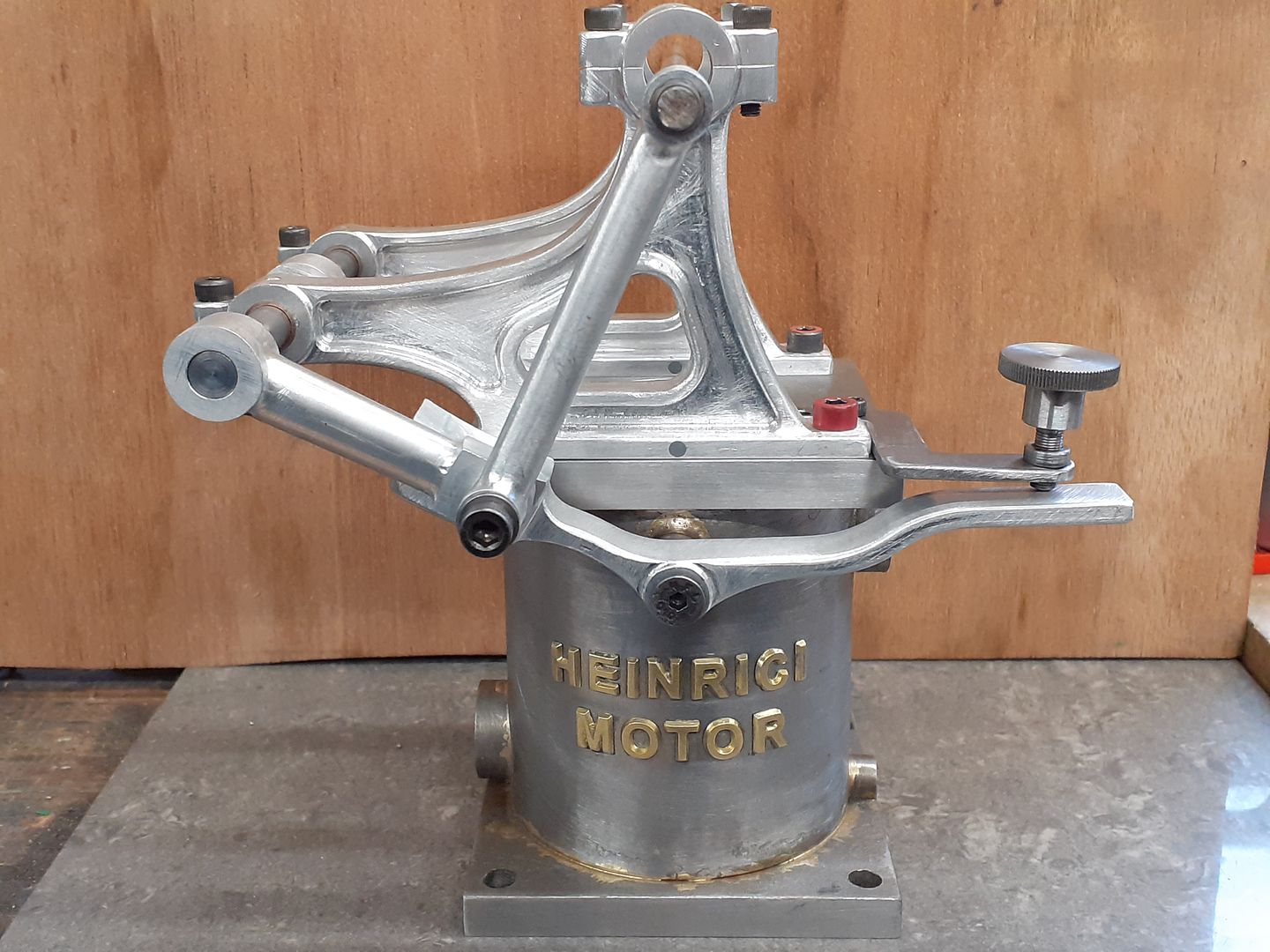

 Good service from M-machine as only ordered yesterday.
Good service from M-machine as only ordered yesterday.

